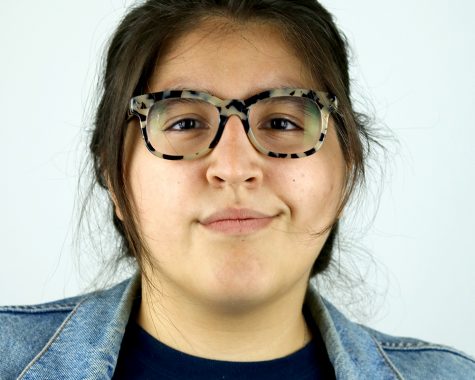Workgroup debates on criteria, process for identifying signature programs
November 29, 2016
Identifying the criteria and process for establishing signature programs and how the colleges will have a role in the programs was discussed at the Academic Visioning Workgroup I meeting Monday.
Jeff Stowell, psychology professor and workgroup chair, said his impression was that everybody was kind of OK with saying that suggestions the members originally created were good suggestions for identifying these programs.
Stowell said his concern had to do with how the colleges will have a say in what it takes to be a signature program and recommended to different reviewing committees.
“Each college should have the opportunity to contribute to our portfolio of signature programs,” Stowell said. “So that means that you can either have a college level review committee in addition to a broader umbrella committee who makes the final decision on what is considered a signature program.”
Members also focused their attention on the actual process of choosing these programs and how they would find the criteria for them.
Kelly Miller, the interim director of admissions, asked Ryan Hendrickson, the interim dean of the graduate school, what the graduate school did when identifying its “first choice” programs.
First choice means that a graduate program meets the highest standards of study at Eastern by achieving certain criteria based on the mission of graduate education.
Hendrickson said the school has 13 first choice programs that were all identified by members of the Council of Graduate School Studies.
He said the criteria were created by the CGS and the process was a combination of forces that came together to determine what program received first choice.
Amy Rosenstein, a special education professor, asked why the workgroup could not use the same criteria as the CGS used for identifying first choice programs.
“So looking at the first choice information, I think it makes sense and it’s applicable to the undergraduate program so I don’t know why we couldn’t use the same criteria,” Rosenstein said. “We might be able to tweak it a little bit if it really needed it but looking through it I don’t know why it would be.”
However, Nora Pat Small, the interim chair of the history department, said before members can establish the criteria for a signature program they have to decide what the definition is first.
Stowell said the working definition of a signature program, which he included in his draft of the report, is a degree program or collection of degree programs that “epitomize your institutions mission and define its distinctiveness in the market place.”
Stowell said signature programs can also be used as a marketing tool to help boost enrollment in high interest majors.
Pat Small said the criteria established for the first choice programs had nothing to do with our distinctiveness in the market place, it was strictly about the expectations and the quality at the graduate level.
Britto Nathan, a biology professor, said his concern is more about not making any other program less marketable.
Stowell said he understands that concern and said the Eastern President David Glassman does want to tout programs for marketing purposes.
“I can’t imagine us in this report devising specific criteria but if this is epitomizing the institutions mission and defining distinctiveness in the market place do we turn this over to the colleges and say this is what we’re looking for you chairs, you deans, identify however many (programs) that meet this,” Pat Small asked.
Stowell said that is his thinking and offered two more options.
The workgroup would allow the college to create their own criteria that falls under an umbrella like this or they could come up with some standard criteria across the colleges.
Stowell said each college would identify three or four programs, though that is not guaranteed.
Because Stowell said the president wants the criteria they plan to use, Nathan said they could write the criteria based on the first choice programs criteria and what they found from Western.
Stowell said members should focus on identifying the criteria they are happy with and a process they can recommend for the next two weeks.
Stowell then asked Hendrickson what he thought was a logical choice for evaluating signature programs.
Hendrickson said he would look to faculty input and suggested the workgroup conduct an open survey for all faculty and students to suggest what they think qualifies as a signature program.
Rosenstein said having a survey could get tricky because how much more students would know about other programs outside of their own.
“They’re only going to know about their own program,” Rosenstein said. “If we have this criteria but you only know what you know about your own program how do you get the information to make a valid decision.”
Hendrickson said they can hope that not everyone will be as parochial as Rosenstein described and said the survey would function as just one tool for the workgroup that could potentially help them.
“For somebody who does survey research this is scaring me to death,” Rosenstein said.
Workgroup members said they can wait till January before thinking about having a survey.
In the meantime, they said they would work on developing recommendations for establishing the criteria for signature programs.
The preliminary report for the workgroup is due Dec. 15 and Stowell said he will include what they discussed in the report.
Rosenstein also gave a presentation regarding the redesign of the special education program and offering an education doctorate to help students be more marketable in the workforce.
Analicia Haynes can be reached at 581-2812 or [email protected].



















































